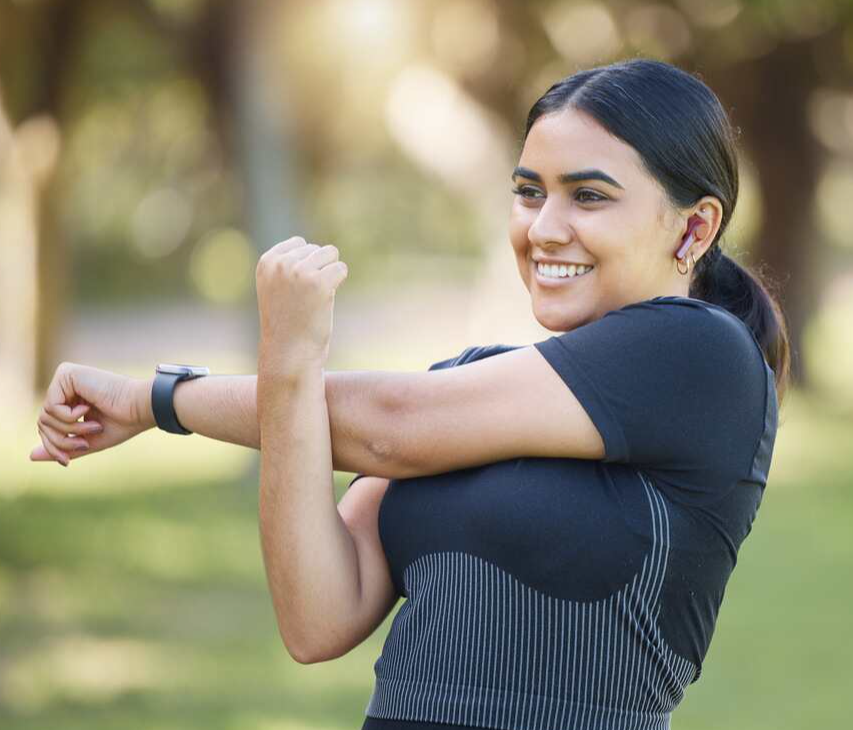
Simple, Proven Routines to Manage PCOS Naturally
Polycystic Ovary Syndrome (PCOS) affects 1 in 5 Indian women of reproductive age, making it one of the most common hormonal disorders in the country. While diet and medication often get the spotlight, exercise remains one of the most effective and underutilised strategies for PCOS management.
Regular physical activity doesn’t just aid in weight loss — it improves insulin sensitivity, reduces androgens, supports ovulation, and boosts mental well-being. And the best part? It doesn’t require fancy equipment or gym memberships. In this guide, we explore how exercise can help with PCOS and how Indian women can incorporate it into a sustainable part of their lifestyle.
Why Exercise Matters in PCOS Management?
PCOS is a hormonal–metabolic disorder, often driven by:
- Insulin resistance – where the body doesn’t respond well to insulin, leading to elevated blood sugar
- High androgen levels – causing symptoms like acne, excess hair growth, and irregular cycles
- Chronic inflammation – linked to fatigue and increased risk of metabolic disease
How Exercise Helps:
✔️ Improves insulin sensitivity – helping control blood sugar and reduce insulin spikes
✔️ Lowers androgens – reducing acne and unwanted facial/body hair
✔️ Promotes ovulation – improving menstrual regularity
✔️ Aids weight loss – especially abdominal fat common in PCOS
✔️ Boosts mood and reduces fatigue – through the release of endorphins and serotonin
Even without significant weight loss, exercise has been shown to reduce insulin and androgen levels, making it a powerful tool for PCOS management (1).
Best Types of Exercise for PCOS
1. Aerobic or Cardio Exercises
These raise your heart rate and improve how your body uses insulin.
Examples:
- Brisk walking
- Cycling or stationary biking
- Swimming
- Dance workouts like Zumba or Bollywood aerobics
Tip: A 30-minute walk after dinner or climbing stairs at home can make a real difference.
2. Strength and Resistance Training
Helps build lean muscle, increases metabolism, and lowers insulin resistance.
Examples:
- Bodyweight squats, lunges, and push-ups
- Resistance bands or light dumbbells
- Home-based routines using water bottles or bags of rice as weights
Bonus: Strength training helps even if you don’t lose weight — it improves body composition and hormonal balance.
3. Yoga and Mind-Body Exercises
Yoga reduces stress hormones (like cortisol), improves flexibility, and supports hormonal balance.
Top Yoga Poses for PCOS:
- Surya Namaskar – full-body activation
- Bhujangasana (Cobra Pose) – opens up abdominal organs
- Supta Baddha Konasana – supports reproductive health
- Pranayama – breathing techniques to calm the mind and body
Studies show yoga significantly improves menstrual regularity and testosterone levels in PCOS women (2).
How Much Exercise is Ideal?
Global guidelines recommend:
- 150 minutes/week of moderate-intensity exercise
- That’s about 30 minutes/day, 5 days a week
If you’re new to working out, start with 10–15 minutes a day and gradually increase. Consistency matters more than intensity (3).
Common Myths About PCOS and Exercise
❌ “PCOS makes weight loss impossible.”
✔️ It’s harder, not impossible. The right type and timing of workouts matter.
❌ “Only intense cardio helps.”
✔️ Brisk walking and yoga are effective too, especially for hormone regulation.
❌ “I feel tired all the time, so I should rest more.”
✔️ While fatigue is real, movement boosts long-term energy and sleep quality.
Staying Consistent: Tips for Indian Women
- Use Indian daily movements – like floor sweeping, squatting, walking to the market
- Work out in short bursts – 10-minute routines are effective too
- Try YouTube videos or app-based workouts in Hindi or regional languages
- Find a fitness buddy – accountability helps
- Track progress – not just weight, but periods, mood, and stamina
When to See a Doctor or Physiotherapist?
- If you’re starting out with obesity, joint pain, or chronic fatigue
- If you have thyroid issues, diabetes, or other conditions
- During fertility treatments or postpartum PCOS flare-ups
- To create a safe, customised routine
A Lifestyle, Not a Fix
Exercise is not a “quick cure,” but it’s one of the most reliable long-term tools for correcting PCOS-related imbalances. From improving cycles and fertility to calming the mind — movement is powerful medicine.
You don’t have to be perfect. You just have to begin.
References
- The effect of exercise as an intervention for women with polycystic ovary syndrome: A systematic review and meta-analysis - PubMed
- Effect of Yoga Therapy on Health Outcomes in Women With Polycystic Ovary Syndrome: A Systematic Review and Meta-Analysis - American Journal of Lifestyle Medicine
- 2023 PCOS Guidelines by Monash University and NHMRC
Frequently Asked Questions(FAQs): PCOS and Exercise
1. Which exercise is best for PCOS?
A combination of brisk walking, strength training, and yoga is ideal. These improve insulin sensitivity, balance hormones, and support ovulation.
2. Can I do weight training with PCOS?
Yes! Strength training helps build muscle, reduce androgens, and improve metabolic health — making it highly effective for PCOS.
3. Is walking enough for PCOS?
Walking 30 minutes a day, 5 days a week, improves blood sugar levels and boosts ovulation — a simple but effective starting point.
4. Can yoga cure PCOS?
PCOS can’t be cured, but yoga helps regulate cycles, lower testosterone, and reduce stress — making it a valuable supportive tool.
5. How many days should I exercise with PCOS?
Aim for at least 150 minutes a week — ideally split into 30 minutes per day, 5 times a week. Even shorter routines can help if done consistently.

Related Post
The Indian PCOS Diet: Evidence-Based Guidelines for Hormonal and Metabolic Balance